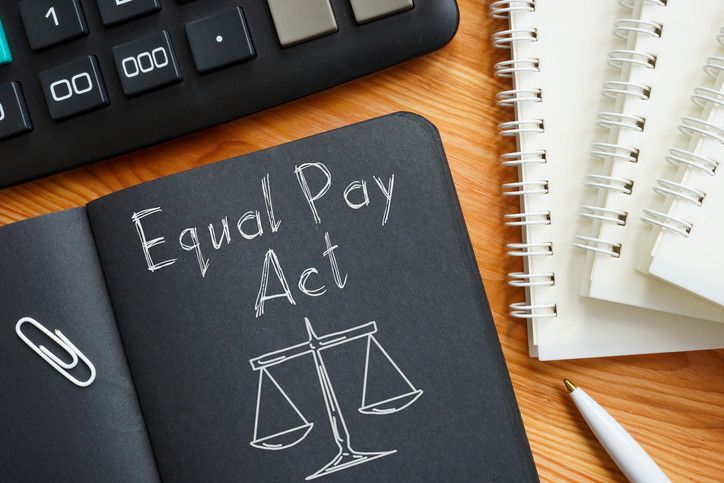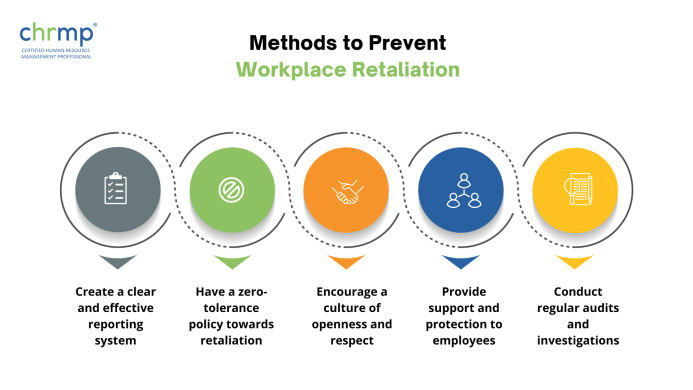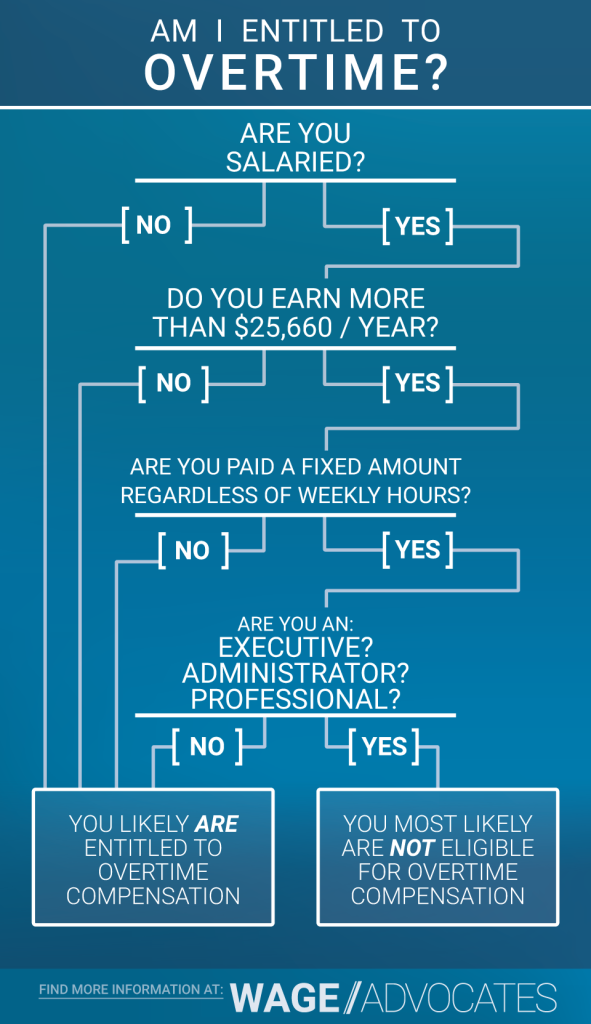
Understanding the Equal Pay Act: Your Guide to Fair Wages
The concept of "equal pay for equal work" seems like a fundamental principle of fairness in any modern society. Yet, for much of history, and even today, disparities in wages based on gender persist. This stark reality led to the creation of landmark legislation designed to combat wage discrimination: the Equal Pay Act (EPA).
Passed over 60 years ago, the EPA remains a cornerstone of worker protection, ensuring that employees receive fair compensation regardless of their sex. But what exactly does it mean? How does it work? And what are your rights under this crucial law?
This comprehensive guide will demystify the Equal Pay Act, breaking down its history, core principles, and practical implications in easy-to-understand language. Whether you’re an employee, an employer, or simply someone interested in workplace equality, understanding the EPA is essential.
>
The Road to Fair Pay: A Brief History of the Equal Pay Act
Before diving into the specifics, it’s helpful to understand why the Equal Pay Act was necessary. In the mid-20th century, it was common practice for employers to pay women less than men for performing the exact same jobs, often with the same qualifications and responsibilities. This wasn’t just an informal practice; it was often openly accepted.
Key Milestones:
- 1963: The Equal Pay Act was signed into law by President John F. Kennedy as an amendment to the Fair Labor Standards Act (FLSA). This marked a pivotal moment, making it illegal to pay different wages to men and women for substantially equal work.
- The Civil Rights Movement: The EPA was enacted during a period of intense social and political change, alongside other groundbreaking civil rights legislation. It was a recognition that economic equality was a critical component of broader social justice.
- Continued Evolution: While the EPA laid the groundwork, the fight for pay equity continued. Later laws, like Title VII of the Civil Rights Act of 1964 and the Lilly Ledbetter Fair Pay Act of 2009, further strengthened protections against wage discrimination and made it easier for individuals to challenge unfair pay practices.
The EPA wasn’t just about closing the gender pay gap; it was about acknowledging the inherent value of an individual’s work, irrespective of their sex.
>
What Exactly is the Equal Pay Act? The Core Principle
At its heart, the Equal Pay Act mandates that men and women in the same establishment be paid equal wages for substantially equal work. It’s important to understand that "equal" doesn’t necessarily mean "identical." The law focuses on the content of the job, not just the job title.
Key Elements:
- Applies to All Employers: The EPA applies to virtually all employers, regardless of size, that are covered by the Fair Labor Standards Act (FLSA). This includes private employers, federal, state, and local governments.
- No Sex-Based Wage Discrimination: The primary goal is to eliminate wage disparities based on sex. This means an employer cannot pay a man more than a woman (or vice-versa) for doing the same kind of work, unless specific, legally recognized exceptions apply.
- Focus on "Substantially Equal Work": This is the most critical concept. The jobs being compared do not have to be identical, but they must be "substantially equal" in terms of:
- Skill
- Effort
- Responsibility
- Working Conditions
Let’s break down what each of these elements means in practice.
>
Deconstructing "Substantially Equal Work": The Four Pillars
When evaluating whether two jobs are "substantially equal" under the EPA, courts and enforcement agencies look at the actual job duties and requirements, not just the titles or descriptions.
1. Skill
What it means: Skill refers to the experience, training, education, and ability required to perform the job.
Examples:
- A "Senior Software Engineer" and a "Lead Developer" might require substantially similar skills if they both involve advanced programming, problem-solving, and team leadership.
- A job requiring a specific professional license (e.g., registered nurse) has different skill requirements than a clerical position, even if both work in a hospital.
Key point: It’s about the required skill, not necessarily the skill an individual possesses beyond what’s needed for the job.
2. Effort
What it means: Effort refers to the physical or mental exertion needed to perform the job.
Examples:
- Two factory workers on an assembly line performing the same repetitive tasks would require substantially similar effort.
- A job requiring frequent heavy lifting (physical effort) is different from a job requiring intense concentration and data analysis (mental effort), even if both are demanding.
Key point: Both physical and mental effort are considered. The total amount and type of effort must be substantially similar.
3. Responsibility
What it means: Responsibility relates to the degree of accountability, supervision, and decision-making authority required by the job.
Examples:
- Two project managers, both responsible for multi-million dollar budgets and overseeing teams of 10 people, would have substantially similar responsibilities.
- A manager who supervises others and has hiring/firing authority has greater responsibility than an individual contributor, even if their technical skills are similar.
Key point: This often involves the impact of decisions, the level of independent judgment, and the scope of duties.
4. Working Conditions
What it means: Working conditions encompass the physical environment and hazards associated with the job.
Examples:
- Two administrative assistants working in the same office, with similar temperature, lighting, and noise levels, would have substantially similar working conditions.
- A construction worker exposed to outdoor elements, heights, and heavy machinery has different working conditions than an office worker.
Key point: While often less frequently litigated than skill, effort, and responsibility, significant differences in working conditions can justify a pay differential.
>
What Does NOT Count as Wage Discrimination Under the EPA? (Affirmative Defenses)
The EPA is powerful, but it’s not a blanket guarantee that all people doing similar jobs will be paid exactly the same. The law recognizes that legitimate, non-sex-based factors can lead to pay differences. These are known as affirmative defenses. If an employer can prove that a pay difference is due to one of these factors, it is not considered illegal under the EPA.
The four affirmative defenses are:
-
A Seniority System:
- Explanation: A system that rewards employees for length of service, where those with more years on the job receive higher pay, is permissible as long as it’s applied equally to men and women.
- Example: A company policy that automatically increases pay by a certain percentage after 3, 5, and 10 years of employment.
-
A Merit System:
- Explanation: A system that rewards employees based on performance evaluations, where higher-performing individuals receive greater raises or bonuses, is allowed if it’s applied fairly and consistently without regard to sex.
- Example: An annual performance review system where employees are rated and those with "exceeds expectations" ratings receive larger merit increases.
-
A System Which Measures Earnings by Quantity or Quality of Production:
- Explanation: Pay systems based on commissions, piece-rate wages, or productivity bonuses are acceptable if they are applied equally to all employees, regardless of sex.
- Example: Sales associates who earn commission based on the volume of sales they generate.
-
A Differential Based on Any Other Factor Other Than Sex:
- Explanation: This is the broadest defense and can cover a wide range of legitimate, job-related reasons for pay differences. The employer must demonstrate that the factor is not sex-based and genuinely explains the pay disparity.
- Examples:
- Education or Training: A specialized degree or certification that is not required for the job but directly contributes to an employee’s higher performance.
- Experience: More relevant experience that significantly enhances an employee’s ability to perform the job, even if not explicitly required.
- Shift Differentials: Higher pay for working less desirable shifts (e.g., night shift, weekends).
- Geographic Location: Different pay scales for employees in different cities or regions where the cost of living or market rates vary.
- Prior Salary (with caveats): While simply relying on prior salary can perpetuate discrimination, using it as one factor among others, and where it doesn’t create a sex-based disparity, might be permissible. Many states and localities have now banned asking about salary history to prevent this.
- Market Factors: If a specific skill set is in high demand, an employer might pay more to attract or retain talent, provided this is not a pretext for sex discrimination.
Crucial Caveat: For any of these defenses to hold up, the employer must prove that the system or factor is legitimate, consistently applied, and not a disguised form of sex discrimination. The burden of proof shifts to the employer once an employee demonstrates "substantially equal work" for unequal pay.
>
Who Enforces the Equal Pay Act?
The primary agency responsible for enforcing the Equal Pay Act is the U.S. Equal Employment Opportunity Commission (EEOC).
The EEOC’s Role:
- Investigates Complaints: The EEOC receives and investigates charges of wage discrimination filed by employees.
- Mediates Disputes: They often try to resolve disputes between employers and employees through mediation or conciliation.
- Litigates Cases: If a resolution cannot be reached, the EEOC can file lawsuits against employers to enforce the EPA.
- Provides Guidance: The EEOC also issues regulations, guidance, and educational materials to help employers and employees understand their rights and responsibilities under the law.
>
Your Rights Under the EPA: What Employees Should Know
As an employee, understanding your rights under the Equal Pay Act is crucial for advocating for fair compensation.
- Right to Equal Pay: You have the right to receive equal pay for substantially equal work, regardless of your sex.
- Right to Complain Without Retaliation: It is illegal for an employer to retaliate against you for:
- Filing an EPA complaint or charge.
- Participating in an EPA investigation or lawsuit.
- Opposing any practice made unlawful by the EPA (e.g., discussing pay with colleagues to uncover potential disparities).
- Right to File a Charge: If you believe you are being paid less than someone of the opposite sex for substantially equal work, you have the right to file a charge of discrimination with the EEOC.
- Statute of Limitations: Generally, you must file an EPA charge within two years of the last discriminatory paycheck. However, if the violation is "willful," you may have up to three years. Each discriminatory paycheck can be considered a new violation.
- Potential Remedies: If a violation is found, remedies can include:
- Back Pay: The difference between what you were paid and what you should have been paid.
- Liquidated Damages: An additional amount equal to the back pay (often in cases of willful violations).
- Interest: On the back pay.
- Attorney’s Fees and Court Costs: If you win a lawsuit.
>
What to Do If You Suspect Wage Discrimination
If you believe you are a victim of wage discrimination under the Equal Pay Act, taking strategic steps can strengthen your position.
-
Gather Information:
- Job Duties: Document your specific job duties, responsibilities, and qualifications.
- Colleague Information (if possible): Try to identify a colleague of the opposite sex who performs substantially similar work but is paid more. Note their job title, duties, experience, and (if you can discreetly find out) their pay. Many workplaces now allow or protect discussions about pay.
- Pay Stubs/Offers: Keep records of your own pay and any job offers.
-
Understand Your Workplace Policy: Review your company’s policies on pay equity, non-discrimination, and internal complaint procedures.
-
Consider an Internal Complaint: If you feel comfortable and your workplace has a clear process, you might consider raising the issue with your HR department or a manager. Sometimes, disparities are unintentional and can be resolved internally. However, be aware that you are not required to go through internal channels before contacting the EEOC.
-
Contact the EEOC: If an internal complaint isn’t feasible, is unsuccessful, or you prefer to go directly to an external agency, contact the EEOC.
- You can visit their website (eeoc.gov) to learn more, find your local office, and initiate the charge filing process.
- An EEOC representative can help you understand your rights and the filing procedures.
-
Seek Legal Counsel: Consulting with an employment lawyer experienced in wage discrimination cases can provide invaluable guidance, especially if your situation is complex or you decide to pursue a lawsuit.
>
The Impact and Legacy of the Equal Pay Act
Over 60 years since its enactment, the Equal Pay Act has undeniably had a profound impact on workplace equality. It established a clear legal standard against sex-based wage discrimination and has served as a powerful tool for individuals to challenge unfair pay practices.
However, the fight for true pay equity is far from over. While the EPA addresses direct wage discrimination for substantially equal work, the broader gender pay gap persists due to a complex interplay of factors, including:
- Occupational Segregation: Women are still overrepresented in lower-paying industries and roles.
- Work-Life Balance Challenges: Caregiving responsibilities often disproportionately fall on women, impacting career progression and earning potential.
- Unconscious Bias: Subtle biases in hiring, promotions, and performance reviews can still affect women’s wages.
- Lack of Pay Transparency: When employees don’t know what their colleagues earn, it’s harder to identify and challenge disparities.
The EPA, alongside other laws like Title VII of the Civil Rights Act (which prohibits discrimination based on sex, race, color, religion, and national origin in all aspects of employment, including pay) and the Lilly Ledbetter Fair Pay Act (which clarified that each discriminatory paycheck resets the 180-day statute of limitations for filing a charge), continues to be a vital piece of the puzzle in achieving genuine economic justice.
>
Common Misconceptions About the Equal Pay Act
To fully understand the EPA, it’s helpful to clarify some common misunderstandings:
-
Misconception 1: The EPA requires identical jobs to be paid the same.
- Reality: The EPA requires "substantially equal work," not identical work. Minor differences in job duties won’t justify a pay gap if the overall skill, effort, responsibility, and working conditions are alike.
-
Misconception 2: The EPA only applies to women.
- Reality: While historically enacted to address discrimination against women, the EPA protects all employees from sex-based wage discrimination. A man can file a complaint if he believes he is paid less than a woman for substantially equal work.
-
Misconception 3: Any pay difference between a man and a woman is illegal.
- Reality: Pay differences are legal if they are based on one of the four affirmative defenses (seniority, merit, production, or any factor other than sex) and are applied fairly and without discriminatory intent. The key is that the factor must be legitimate and non-discriminatory.
-
Misconception 4: The EPA covers discrimination based on race, age, or disability.
- Reality: The EPA specifically addresses sex-based wage discrimination. Other forms of discrimination are covered by different laws, such as Title VII of the Civil Rights Act (race, color, religion, sex, national origin), the Age Discrimination in Employment Act (ADEA), and the Americans with Disabilities Act (ADA).
>
Conclusion: Empowering Fair Pay for All
The Equal Pay Act stands as a testament to the enduring principle that hard work deserves fair compensation, regardless of gender. It empowers individuals to challenge unfair wage practices and holds employers accountable for ensuring equitable pay structures.
While the journey toward complete pay equity continues, understanding the EPA is a critical first step for every employee and employer. It’s not just about legal compliance; it’s about fostering workplaces where talent is valued equally, and everyone has the opportunity to thrive. By being informed, advocating for your rights, and promoting transparency, we can collectively work towards a future where "equal pay for equal work" is not just a law, but a universal reality.
:max_bytes(150000):strip_icc()/equal-pay-84711244-56aa24d33df78cf772ac89b0.jpg)



Post Comment